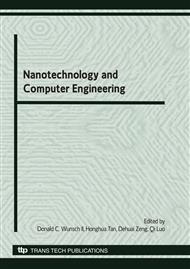p.613
p.620
p.627
p.633
p.640
p.646
p.651
p.657
p.663
Mechanism of a Resource Location Approach in Power-Law Networks
Abstract:
How to effectively locate resources is a very important factor affecting the performance of distributed system in wide area network environments. Some resource location methods have been already proposed, which utilize Small World phenomena, but have not show how to construct a Small World exactly. In this paper, on the base of Kleinberg Small World model, aimed power-law characteristics, an efficient decentralized construction approach PLSWCP(Power-law oriented Small World Construction Protocol) is proposed, which uses fairly small partial view instead of global knowledge of network. Theoretical analysis and simulations show that PLSWCP is scalable, self-adaptable, and load-balanced, improving the efficiency of resource location.
Info:
Periodical:
Pages:
640-645
Citation:
Online since:
June 2010
Authors:
Keywords:
Price:
Сopyright:
© 2010 Trans Tech Publications Ltd. All Rights Reserved
Share:
Citation:


